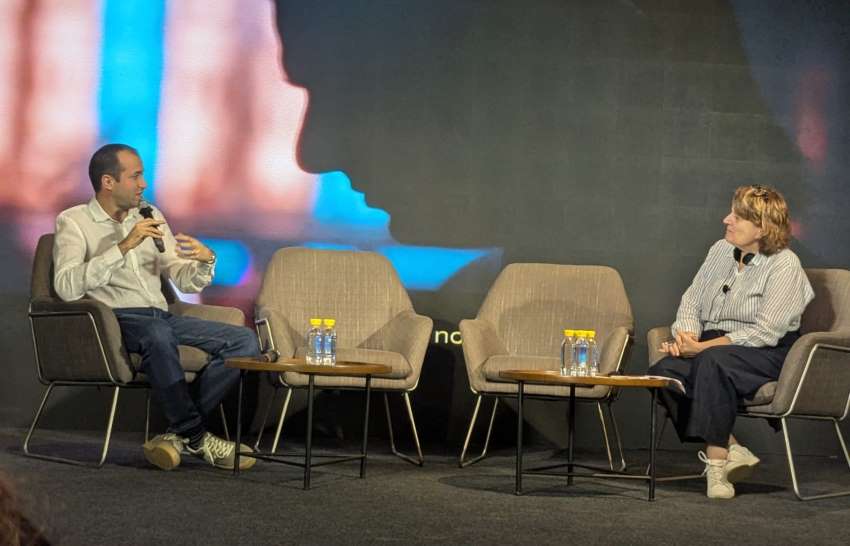"The focus of most denim brands in 2020 will be on sustainability as they introduce new initiatives to eliminate hazardous chemicals such as per- and polyfluorinated chemicals from their supply chains. Pioneering this campaign is G-Star, the Dutch denim brand which henceforth plans to use only 100 per cent sustainably sourced cotton, such as Better Cotton Initiative cotton, organic cotton and recycled cotton, by the end of next year. Of its non-cotton components, the company promises a target of 90 per cent."
 The focus of most denim brands in 2020 will be on sustainability as they introduce new initiatives to eliminate hazardous chemicals such as per- and polyfluorinated chemicals from their supply chains. Pioneering this campaign is G-Star, the Dutch denim brand which henceforth plans to use only 100 per cent sustainably sourced cotton, such as Better Cotton Initiative cotton, organic cotton and recycled cotton, by the end of next year. Of its non-cotton components, the company promises a target of 90 per cent.
The focus of most denim brands in 2020 will be on sustainability as they introduce new initiatives to eliminate hazardous chemicals such as per- and polyfluorinated chemicals from their supply chains. Pioneering this campaign is G-Star, the Dutch denim brand which henceforth plans to use only 100 per cent sustainably sourced cotton, such as Better Cotton Initiative cotton, organic cotton and recycled cotton, by the end of next year. Of its non-cotton components, the company promises a target of 90 per cent.
Launching the most sustainable jeans ever
In 2017, G-Star employed 57.3 per cent sustainable materials and 69.8 per cent sustainable cotton. In 2018, it launched its most sustainable jeans ever. As a part of the process, the brand developed the world’s first denim fabric to be certified Gold by the Cradle to Cradle Products Innovation Institute’s rigorous standards, which take into account factors like material health and reutilisation, renewable energy, water stewardship and social fairness. Made with 100 per cent organic cotton, the jeans were dyed with 70 per cent fewer chemicals, used no salts and are 98 per cent recyclable at the end of their life.
launched its most sustainable jeans ever. As a part of the process, the brand developed the world’s first denim fabric to be certified Gold by the Cradle to Cradle Products Innovation Institute’s rigorous standards, which take into account factors like material health and reutilisation, renewable energy, water stewardship and social fairness. Made with 100 per cent organic cotton, the jeans were dyed with 70 per cent fewer chemicals, used no salts and are 98 per cent recyclable at the end of their life.
The company also aims to focus on transparency. It has introduced a “Where is it Made?” button that discloses not the just country of origin of each of its garments but also the name and address of the originating factory, any special programs or certifications that distinguish the facility and the number and gender breakdown of its workers.
On its part, Levi’s aims to slash its carbon emissions by 90 per cent and use 100 per cent renewable energy in all owned-and-operated facilities. It also vows to reduce carbon emissions across its global supply chain by 40 percent, which is proving both a challenge and opportunity because it requires directing so many moving parts. The brand is also working on its goal to make 80 percent of Levi’s products using its water.
Chasing globally relevant goals
For Wrangler, it is important to achieve globally relevant goals that reflect its most material issues. By 2020, the company plans to use 100 per cent “preferred chemistry” throughout its supply chain besides conserving 5.5 billion liters of water. Five years hence, the brand aims to source only sustainable cotton and power all owned-and-operated facilities with 100 percent renewable energy. Having its own manufacturing facilities gives the brand multiple opportunities that other brands many not have.
Eyeing carbon neutrality by 2025
Aiming to be the world’s most sustainable denim company, by 2020, Nudie Jeans aims to increase the number of own-brand jeans it takes back by 20 percent and the number of own-brand secondhand jeans it sells by 30 percent globally. That same year, at least one style in its collection will comprise post-consumer recycled Nudie Jeans from its garment-collection scheme. All targets are at their midway point and just require one final sprint, Gelsi noted. By 2025, the company wants to be carbon neutral along its entire supply chain, from raw materials to finished product.
Conserve 10 billion liters of water
Old Navy has set one of its most ambitious goals till date. The brand plans to conserve a total of 10 billion liters of water by the end of 2020. Till date, its parent company Gap Inc has saved 5.7 billion liters.
In 2020, Gap Inc. signed a 90-megawatt virtual power purchase agreement for a wind project with Enel Green Power North America. One of the largest offsite renewable energy contracts by an apparel retailer, the partnership will generate enough wind energy to power the equivalent of more than 1,500 Gap Inc. retail stores By 2030, Gap Inc. aims to reach 100 percent renewable energy across all owned-and-operated facilities globally.












